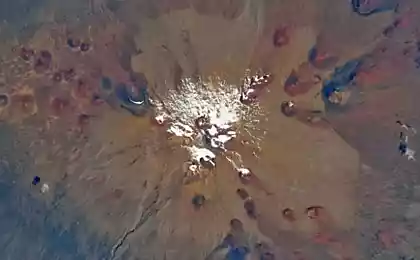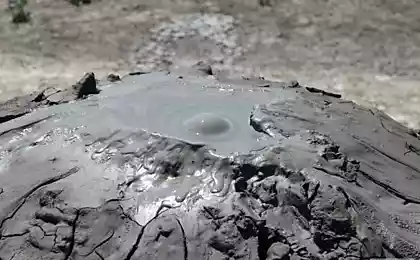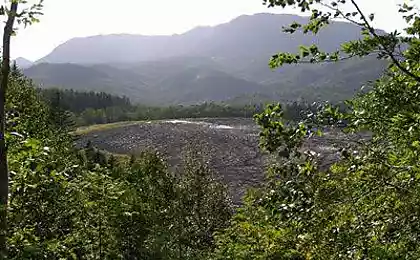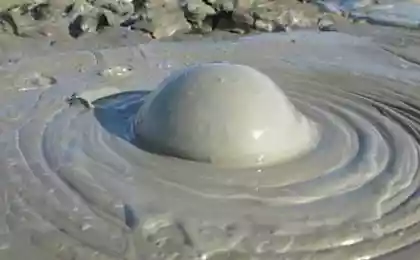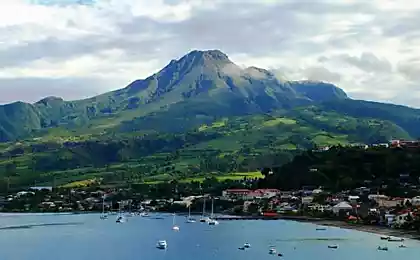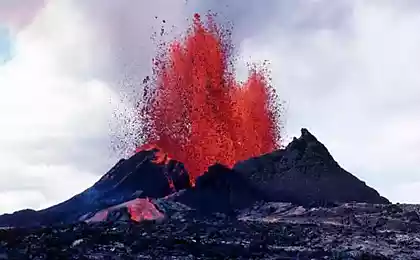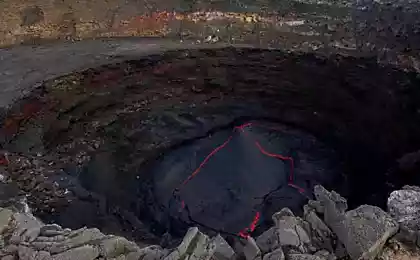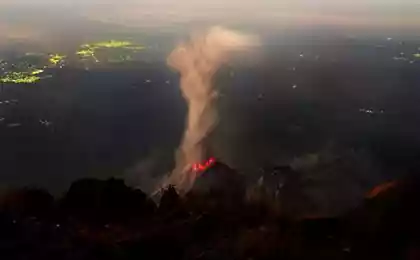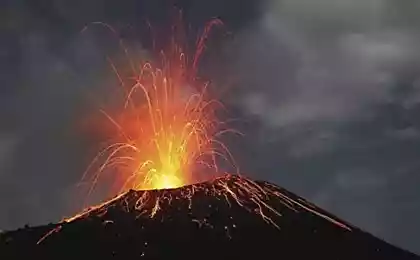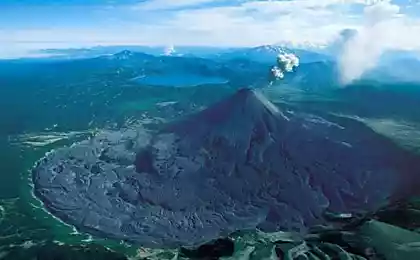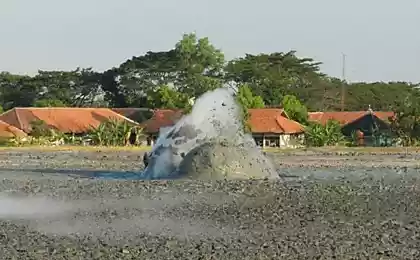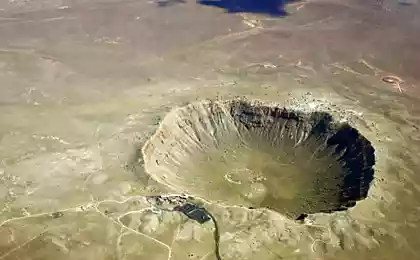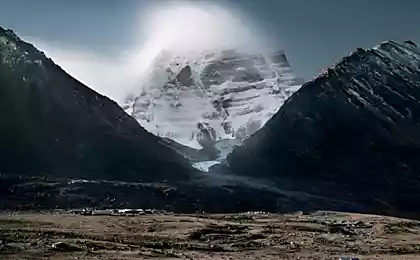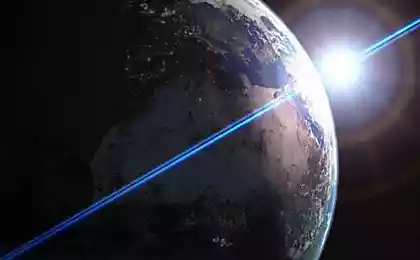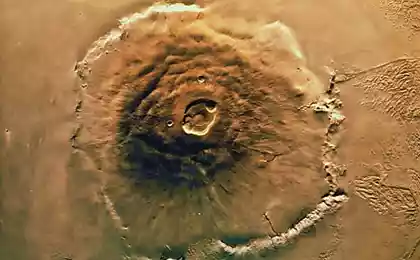256
Origin of mud volcanoes
Known in international literature as mud volcanoes, these volcanoes are actually the result of the release of gas crossing the clay layer of the earth in combination with water from groundwater, from depths of over 3000 m. In Romania, they are located near the area of Pyclece Mar and Pyclele Mici, in the Buzau area, between the towns of Berka and Arbanache (Photo 1).
In terms of geomorphology, these mud volcanoes are part of the Burke hollow, located in the anticlinal fold between Berka and Arbanache, forming two inversions and a loop of a typical anticlinal structure. The anticlinal fold has a length of about 18 km and is located in the SSV-YUZ direction.
If we divert from the unique and sometimes wild landscape, resembling a copy of our satellite (Moon), and look closely at the relief forms of mud volcanoes, we see a fairly large number of unique geomorphological features. The "volcanic region" is surrounded by hills whose curved lines, connecting in different places, can be very steep. Manifesting typical forms of relief of the convex section, mud volcanoes, however, are no more than manifestations of local features of the relief. For example, the base of the anticlinal fold, stretching from West to East, is the highest point in this area, which borders volcanoes, while the high slopes around the cones form two couests, facing one another (Photo 2).
The names of these “volcanic” complexes were given due to the color of the mud they emit, similar to a smoky fog. Geology also explains the floristic composition of the complex, which is a set of steppe plants exactly like textbooks, although in terms of geographical latitude and even longitude of the region, we should be in the forest-steppe. Proof of this are the red fields leading visitors to the interior of the volcanic complex, which are due to the bright color of Shober’s nitrate (Nitraria schoberi), a plant typical of the steppes of Central Asia, adapted to local conditions of high soil salinity. The two complexes of mud volcanoes are not so similar as they seem at first glance. The volcanoes from Pyklele Miči (Photo 3) have less pronounced shapes, with several separate cones, more gentle slopes; they are younger and less spectacular.
The mud volcanoes at Pyklela Mar (Photos 4 and 5) have more pronounced volcanic forms, with one central volcano and several minor cones on the sides, with a wide plateau at the base and mud flows on the slopes. Although similar manifestations of interaction between tectonics, gases and water with salt structures can be found in the Precarpathia Gorzh, Transylvanian depression and on the Moldavian Plateau, mud volcanoes Buzau surpasses others in size and specificity of formation in the seismically active zone. In addition to Romania, individual mud volcanoes can be found in Azerbaijan, Italy, Iran, Iraq, India and Russia. In some cases, their formation is associated with volcanic activity in the region.
We wish you a pleasant trip to the mud volcanoes Pyklece Mar and Pykle Mič, now you can evaluate them in terms of geomorphology!
Source: www.ecology.md
In terms of geomorphology, these mud volcanoes are part of the Burke hollow, located in the anticlinal fold between Berka and Arbanache, forming two inversions and a loop of a typical anticlinal structure. The anticlinal fold has a length of about 18 km and is located in the SSV-YUZ direction.
If we divert from the unique and sometimes wild landscape, resembling a copy of our satellite (Moon), and look closely at the relief forms of mud volcanoes, we see a fairly large number of unique geomorphological features. The "volcanic region" is surrounded by hills whose curved lines, connecting in different places, can be very steep. Manifesting typical forms of relief of the convex section, mud volcanoes, however, are no more than manifestations of local features of the relief. For example, the base of the anticlinal fold, stretching from West to East, is the highest point in this area, which borders volcanoes, while the high slopes around the cones form two couests, facing one another (Photo 2).
The names of these “volcanic” complexes were given due to the color of the mud they emit, similar to a smoky fog. Geology also explains the floristic composition of the complex, which is a set of steppe plants exactly like textbooks, although in terms of geographical latitude and even longitude of the region, we should be in the forest-steppe. Proof of this are the red fields leading visitors to the interior of the volcanic complex, which are due to the bright color of Shober’s nitrate (Nitraria schoberi), a plant typical of the steppes of Central Asia, adapted to local conditions of high soil salinity. The two complexes of mud volcanoes are not so similar as they seem at first glance. The volcanoes from Pyklele Miči (Photo 3) have less pronounced shapes, with several separate cones, more gentle slopes; they are younger and less spectacular.
The mud volcanoes at Pyklela Mar (Photos 4 and 5) have more pronounced volcanic forms, with one central volcano and several minor cones on the sides, with a wide plateau at the base and mud flows on the slopes. Although similar manifestations of interaction between tectonics, gases and water with salt structures can be found in the Precarpathia Gorzh, Transylvanian depression and on the Moldavian Plateau, mud volcanoes Buzau surpasses others in size and specificity of formation in the seismically active zone. In addition to Romania, individual mud volcanoes can be found in Azerbaijan, Italy, Iran, Iraq, India and Russia. In some cases, their formation is associated with volcanic activity in the region.
We wish you a pleasant trip to the mud volcanoes Pyklece Mar and Pykle Mič, now you can evaluate them in terms of geomorphology!
Source: www.ecology.md
Sharks are less dangerous to humans than bees
Scientists have created biomatrica able to generate energy from sweat
